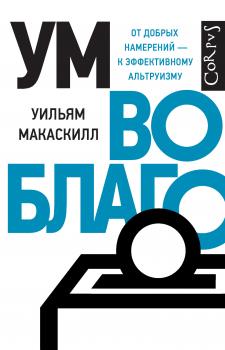MREADZ.COM - много разных книг на любой вкус
Скачивание или чтение онлайн электронных книг.Между Полярной звездой и Полуденным Солнцем: Кафа в мировой торговле XIII–XV вв.
Предлагаемая книга являет собой попытку культурологического взгляда на сферу экономических отношений той эпохи, которую еще недавно называли торговой революцией, а сегодня склонны определять как эпоху коммерциализации и протоиндустриализации. Читатель найдет в ней сведения об особенностях обмена между Севером и Югом, становлении коммерческой техники, тех или иных товарных статьях, их реальном и ирреальном значениях в культурах того времени, новых типах деловых людей. Предназначается как историкам-специалистам, так и всем, интересующимся предысторией современной коммерции и бизнеса.
Лабиринты алхимии
В книгу вошли произведения, раскрывающие возможность разгерметизировать алхимические тексты на основе оригинальной методики их интерпретации. Это монография «Алхимия: выход из спагирического лабиринта» и четыре статьи, освещающие различные аспекты алхимии и демонстрирующие непредвзятый подход к работе с разнообразными жанрами алхимических трактатов, содержащих одну и ту же тему – описание теургической практики как способа взаимодействия с алхимическим Духом Меркурием. В целом книга предлагает вниманию читателей ответы на следующие вопросы: как устроены алхимические трактаты; о чем они повествуют; кто были их создатели, каких этических и практических установок они придерживались; как они позиционировали алхимию по сравнению с другими эзотерическими течениями, отстаивая ее идентичность и уникальность.
Основа философии
В книге впервые в истории философии рассматривается вопрос об основе выделения понятийных элементов. Автор доказывает, что судьба философии и науки зависит от понятийного выделения, и показывает скрытые пружины этой зависимости. «В самой основе философии лежит гносеологическое условие, подталкивающее философскую деятельность к экстравертности, чтобы избежать внутреннего паралича интравертного самоанализа, как в случае данного исследования. Другими словами, философии приходится совершать прогрессивное понятийное развертывание, чтобы не блуждать в поисках однозначного значения собственного выделенного, которое, подобно сокровищу у подножия радуги, все время отклоняется от точной фиксации». Книга адресована всем, кого волнуют вопросы понятийного выделения и оформления предмета своего интереса.
Онтология религии: основные понятия и принципы
Излагается авторская концепция онтологии религии как теоретического ядра философии религии. Обсуждаются основные понятия и принципы онтологии религии. Через взаимосвязь категорий абсолютного и относительного, отчуждения и освоения определяется сущность религии. Изучаются такие темы, как идея Бога, альтернативные учения о сотворении мира, доказательства бытия Бога, сопряжение вечности и времени, закон природы, философско-религиозные модели человека. Анализируются проблемы религиозной истины, знания и веры, религиозного опыта, взаимодействия науки и религии, языка религии. Для студентов и аспирантов вузов, изучающих религиоведение, философию и культурологию, а также для широкого круга читателей, интересующихся философско-религиозными вопросами.
Странная жизнь и труды Эндрю Борда, тайного агента, врача, монаха, путешественника и писателя
Книга является первой в мире научно-популярной биографией Эндрю Борда (ок. 1490–1549), чей жизненный путь был полон неожиданных и крутых поворотов. Он становился то университетским школяром, то монахом, то тайным агентом, то путешественником, то знаменитым врачом с обширной практикой. Несмотря на неупорядоченность свой жизни, он сумел написать ряд сочинений по медицине, диетологии, путешествиям, которые пользовались большой популярностью у его современников и стали предметом рассмотрения и анализа в настоящей книге. Для широкой читательской аудитории.
Экономическая история мира. Том 3. Англия: колониальный империализм. Германия: юнкерский капитализм. Франция: ростовщический империализм. Особенности империализма США и Японии. Развитие капитализма в России
Издание впервые объединяет историю развития мирового хозяйства и историю экономической мысли, включая философские концепции классиков экономической науки и экономические взгляды знаменитых философов. Будет незаменимо при подготовке к экзаменам кандидатского минимума по истории и философии экономики.
Экономическая история мира. Том 2. Цивилизации Америки, Великие географические открытия и колониальное хозяйство, генезис капитализма и становление классической политэкономии, великие буржуазные революции и развитие капитализма
Издание впервые объединяет историю развития мирового хозяйства и историю экономической мысли, включая философские концепции классиков экономической науки и экономические взгляды знаменитых философов. Будет незаменимо при подготовке к экзаменам кандидатского минимума по истории и философии экономики.
Алый псалтырь
Книга обжигающей любовной лирики, тонкой, изящной и трепетной, о встрече, которая была предрешена, ибо состоялись и не разменяли себя на медяки двое, верившие в нее. Там, вне времени и пространства, Поэзия и Она – друг друга обнявшие огненные реки, близость – обряд посвящения, и черный шёлк звучит в сонетах алых губ. Танец огня в безудержном сердце, языки пламени, скрещенные в танце в том небе, где их сочли одним, в этом белом краю трепета строф любовь, что вшита им в души. И каллиграфией страсти вычерчивается вседозволенность. Читайте и да пребудет в ваших сердцах бессмертные любовь и поэзия!
Так полон или пуст? Почему все мы – неисправимые оптимисты
Как мозг порождает надежду? Каким образом он побуждает нас двигаться вперед? Отличается ли мозг оптимиста от мозга пессимиста? Все мы склонны представлять будущее, в котором нас ждут профессиональный успех, прекрасные отношения с близкими, финансовая стабильность и крепкое здоровье. Один из самых выдающихся нейробиологов современности Тали Шарот раскрывает всю суть нашего стремления переоценивать шансы позитивных событий и недооценивать риск неприятностей. «В этой книге описывается самый большой обман, на который способен человеческий мозг, – склонность к оптимизму. Вы узнаете, когда эта предрасположенность полезна, а когда вредна, и получите доказательства, что умеренно оптимистичные иллюзии могут поддерживать внутреннее благополучие человека. Особое внимание я уделю специальной структуре мозга, которая позволяет необоснованному оптимизму рождаться и влиять на наше восприятие и поведение. Чтобы понять феномен склонности к оптимизму, нам в первую очередь необходимо проследить, как и почему мозг человека создает иллюзии реальности. Нужно, чтобы наконец лопнул огромный мыльный пузырь – представление, что мы видим мир таким, какой он есть». (Тали Шарот)
Ум во благо. От добрых намерений – к эффективному альтруизму
Адъюнкт-профессор философии Оксфордского университета излагает принципы эффективного альтруизма – основанного на научных методах подхода к благотворительности, прозванного «великодушием для высоколобых» – и утверждает, что мир может спасти не красота, а знание цифр и фактов.









